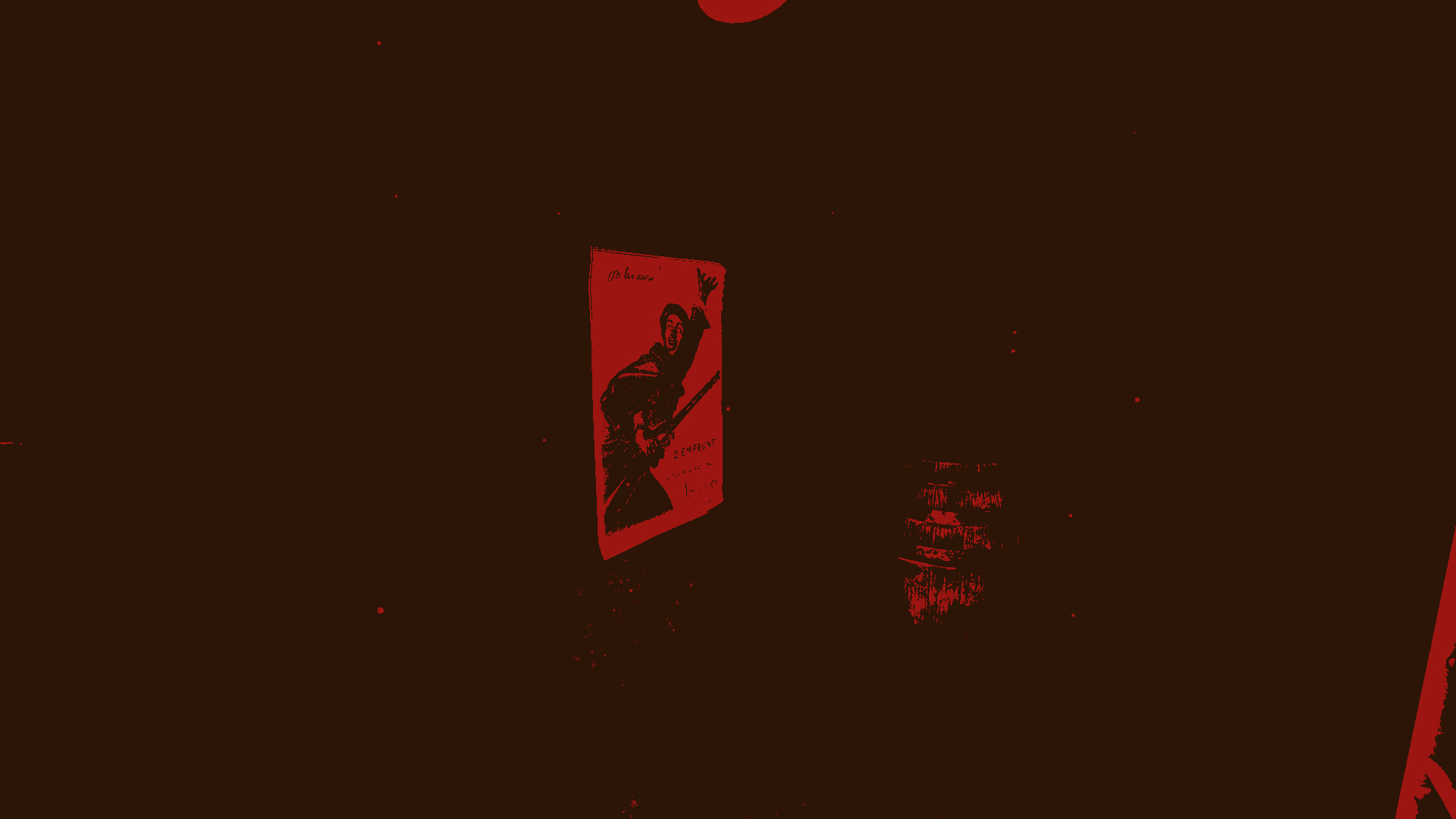
This article discusses plot details from throughout Amnesia: The Bunker.
The nightmare begins with an overwhelming terror that you will be seen by other people. Aside from a lone, bespectacled friend, every other human shape will do you harm. They will shoot you, a French soldier fighting for some godforsaken, blasted plot of western European land in the First World War, if they see you scuttling through the rain-wet trenches. They want you dead with the same instinctual ferocity with which you want them dead. To see another is to perish.
The nightmare transforms with their absence. Suddenly alone within the cramped halls of an underground bunker, you, embodying the tabula rasa of Soldat Henri Clément, soon wish that the others would return.
But Amnesia: The Bunker is about isolation. The one place of relative safety in the overwhelming violence of an early 20th century battlefield—an underground bunker—is transformed into a classical labyrinth with you as its trembling Theseus. The minotaur, in this case, emerges from the gloom with a visage so horrific it causes your vision to blur when it so much as looks upon you. Even as this effect fades with repeated exposure, the bone-crunching embrace of the beast remains an important memory that sends a spike of dread through your brain at the sight of its bulk rounding a dark corner. You do not want to set eyes on this thing, which is your sole constant companion in the underground maze.
Only notes from departed soldiers, scribbled ghosts that glow with the faint warmth of life when added to a notebook and held up to the light by an often-bloodied hand, offer guidance towards potential salvation. Avoid making noise. Keep the lights on but out of view. Follow the breadcrumbs of scarcely provided information on the long run toward unlocking an armoury, grabbing some dynamite, and blowing a hole through the piled rock that imprisons you. Read more, though, and these same notes provide more reasons to dread your situation. The other side of the help these documents offer is a growing collage of the evils that have left your fellow soldiers dead and a hulking creature stalking you so relentlessly. They inflame and define the dimensions of your imagination, sketching in the outlines of your fears and confirming their reality.
The technology of the bunker is equally double-edged, but more impassive. It will bar your attempts to escape the nightmare by stubbornly refusing to bring a radio to life or allow you past locked doors blocking your path of escape. It will also provide life-saving light, power the revolver and shotgun that temporarily cow the monster, and offer your only means of flight: a dynamite explosion. (All of this is more neatly communicated by a hand-wound flashlight, which makes your surroundings visible even as the whirring noise that comes from charging it catches the monster’s attention.)
The Bunker couples the brief appearances of fellow humans with a heightened level of danger and fear. By doing so it ensures you don't forget the peril that comes from the companionship they crave while skulking through the shadows. The murmurs of a German prisoner of war turn into shrieks of terror as soon as you grow close to freeing him from a prison cell. The rantings of a disturbed comrade terminate in shotgun blasts aimed in your direction. Emerging into the sunlight for the first time in what feels like days, but, according to the save file is only a few hours, is momentarily invigorating. But then a sniper’s bullet cracks near your head and you remember, after a period of nightmarish forgetting, that the outside is also populated by other people who want you dead. Amidst all of this it seems safer, instead, to huddle among the corpses and ponder the grim questions that arise out of the First World War’s legacies: What is the point of struggling to hold onto a life that’s lived within the context of such ceaseless, impossibly vast inhumanity?
Naturally, then, The Bunker’s terror centers on the kind of loneliness this line of questioning engenders. It isn’t quite misanthropic or entirely pessimistic but it's a game that finds appropriate despair in its setting. When the world turns on itself, the planet thrashing in self-destruction in preparation for more horrors to come, tales of heroic individuals emerging from the gloom physically and mentally unscathed serve only to sanitize and distract from one of the darkest eras in our history.
And so, The Bunker ends with the promise of sunlight barely hidden at the end of a short tunnel by a pile of rocks. Move them aside and tumble into a crater filled with dirty water, eviscerated corpses. Look up and see the monster that has spent hours chasing you scuttle off into the distance, maybe off to find another lone soldier to torment. Before there’s a chance to feel relief in your newfound freedom, whistles sound, flashlight beams cross the air, and the sound of approaching German enemies grows louder before a cut to black. You return to civilization, and, in response, civilization kills you.
***
Reid McCarter is a writer and a co-editor of Bullet Points Monthly. His work has appeared at The AV Club, GQ, Polygon, Kill Screen, Playboy, The Washington Post, Paste, and VICE. He is also co-editor of SHOOTER and Okay, Hero, co-hosts the Bullet Points podcast, and tweets @reidmccarter.